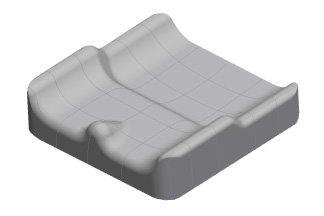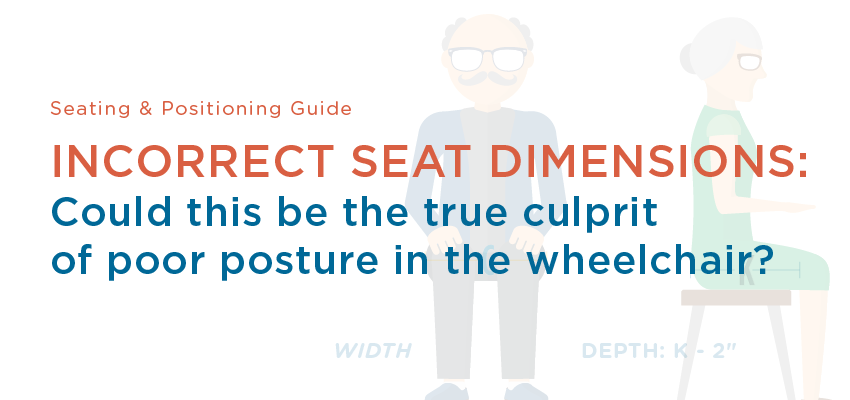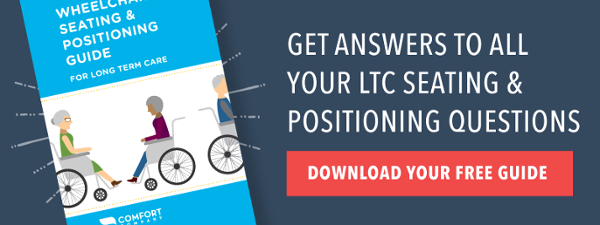Part 9 in our LTC Seating & Positioning series intended to shed some light on the mystery of seating and positioning in the LTC setting. See Part 1, Part 2, Part 3, Part 4, Part 5, Part 6, Part 7, and Part 8. Looking for more information on seating and positioning? Check out our digital, rehab-focused Wheelchair Seating & Positioning Guide here.
Seating and positioning can be frustrating enough, but dealing with a very involved resident with multiple medical complications and postural deformities presents an even larger challenge. Often, when dealing with a seating issue, we first consider what is “wrong” with the resident’s posture. Our minds jump to what piece of equipment we could purchase to accommodate their postural abnormality. We automatically try to correct the posterior pelvic tilt, anterior pelvic tilt, pelvic obliquity, rotation of the pelvis, or the windswept posture. However, we need to take a step back and consider that the real issue might be the “vehicle” we are placing this resident in. Have we considered that the true culprit of poor wheelchair positioning may be the wheelchair itself?!
I understand firsthand that in the nursing home setting we are often required to use stock wheelchairs from the storage rooms. However, we NEED to understand the importance of a properly fitted wheelchair in positioning a resident well, which, in turn, prevents the unwanted movement that precedes falls, wounds, and injury. In this blog, we are going to focus on seat dimension issues and look at how an ill-fitting seat surface can be the cause of the abnormal postures we are trying to accommodate. Many times, if we can correct the issues with the wheelchair itself, the poor posture can miraculously disappear!
The charts below break down specific issues your resident could be having in relation to incorrect wheelchair seat width and depth. These two dimensions are crucial to proper pelvic and LE alignment.
|
HAMMOCKING SEAT SLING
|
||
| What is going on? | Negative Result | What can you do? |
| Pelvis collapses | Posterior pelvic tilt aka sacral sitting | Add Rigid Insert |
| Resident seeks out one side of wheelchair for stability | Pelvic obliquity | Add Rigid Insert |
| Resident compensates by rotating pelvis for stability | Pevlic rotation | Add Rigid Insert |
| LEs "sweep" to one side | Windswept posture of LEs | Add Rigid Insert |
|
WIDTH: TOO NARROW
|
||
| What is going on? | Negative Result | What can you do? |
| Excess pressure at trochanter from contact with the chair | Wound risk at the trochanter |
Measure hip width Look for a skin protection cushion that immerses the trochanters |
| Resident rotates hips to "fit" into the chair | Pelvic rotation | Measure hip width |
| Resident "sweeps" LEs to one side, trying to avoid buildup of pressure on the trochanters | Windswept posture of the LEs |
Measure hip width Find a cushion with medial abduction and lateral adduction contours to maintain LE alignment |
|
WIDTH: TOO WIDE
|
||
| What is going on? | Negative Result | What can you do? |
| Resident leans to one side to increase stability. Pelvis will be lower on that side | Pelvic obliquity | Measure hip width |
| Pelvis collapses | Posterior pelvic tilt aka sacral seating | Measure hip width |
| Pelvic collapse causes hips to internally rotate and LEs to excessively adduct |
Strain & contracture risk at hip joints Wound risk at medial knees where knees rub together |
Find a cushion with medial abduction and lateral adduction contours to maintain LE alignment |
| LEs "sweep" to one side when LE weakness is present | Windswept posture of LEs |
Measure hip width Find a cushion with medial abduction and lateral adduction contours to maintain LE alignment |
|
DEPTH: TOO DEEP
|
||
| What is going on? | Negative Result | What can you do? |
|
Seat sling digs into the back of legs causing pain Resident will slide forward to alleviate the pain |
Posterior pelvic tilt aka sacral sitting | Measure upper leg length minus 2" |
|
Seat sling digs into the back of legs decreasing circulation, increasing LE edema Resident slides forward to alleviate numbness |
Posterior pelvic tilt aka sacral sitting | Measure upper leg length minus 2" |
| Foot propulsion more difficult, resident slides forward for better heel strike |
Posterior pelvic tilt aka sacral sitting |
Measure upper leg length minus 2" |
| Resident will slide forward immediately after repositioning | Posterior pelvic tilt aka sacral sitting |
Measure upper leg length minus 2" |
*Use a manual wheelchair that has seat depth adjustability: K0004
|
DEPTH: TOO SHALLOW
|
||
| What is going on? | Negative Result | What can you do? |
|
Decreased femoral contact and LE support |
Windswept posture, abduction, or adduction of LEs |
Measure upper leg length minus 2" Find a cushion with medial abduction and lateral adduction contours to maintain LE alignment |
|
Reduced area for pressure redistribution results in increased pressure at the ITs, sacrum, and coccyx |
Wound risk at ITs, sacrum, and coccyx |
Measure upper leg length minus 2" Look for a skin protection cushion that immerses and/or offloads the bony prominences |
| Pelvis collapses inward due to lack of LE support to ensure pelvic alignment |
Strain & contracture risk at hip joints Wound risk at medial knees where knees rub together |
Measure upper leg length minus 2" Find a cushion with medial abduction and lateral adduction contours to maintain LE alignment |
*When LE alignment is an issue: think CONTOURS when choosing a cushion!

Multiple wheelchair factors effect posture and should be considered when seating a resident. Don’t forget to consider:
- Wheelchair seat width and depth
- Seat sling tension and position
Understanding how seat dimensions as well as hammocking seat slings effect postural alignment and utilizing the suggested methods to deal with each, will allow you to look at those storage closet chairs and make a better choice as to which size is needed. ALWAYS take accurate measurements of your resident in order to match the wheelchair to your resident’s personal dimensions. In doing so many of these issues can be alleviated. Remember: find a chair to match the resident NOT change the resident to fit the chair!
Please refer to the Seating and Positioning Guide to see what measurements need to be taken to ensure an accurately fitted wheelchair system!

Ana Endsjo, MOTR/L, CLT
Clinical Education Manager LTC Division
Ana Endsjo has worked as an occupational therapist since 2001 in a variety of treatment settings. She has mainly worked with the geriatric population, dedicated to the betterment of the treatment of the elderly in LTC centers. Her focus has been on seating and positioning and contracture management of the nursing home resident. With this experience, her hope is to guide other therapists, rehab directors, nurses, and administrators through educational guides, blogs, webinars, and live courses in her role as Clinical Education Manager for the long term care division.

